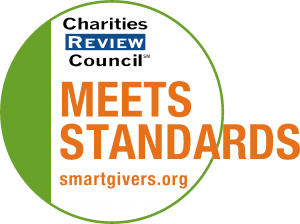Impact and Programs
Accomplishments
MCEE, Minnesota's lead provider of professional development to K-12 teachers in personal finance and economics, provides a range of top-quality courses and curricula for teachers, and engaging student and community-based programs that improve personal financial and economic knowledge and skills. Research has shown that teachers equipped with deeper content knowledge deliver a more impactful learning experience for their students. Through MCEE, teachers learn to make economics relevant, meaningful, and exciting to students. In fiscal year 2021 (ended June 30, 2021), 2,575 teachers registered for registered for 132 professional development programs delivered by MCEE. These teachers in turn taught 44,000+ students that year alone! Additionally, over 1,540 students participated directly in MCEE programs and competitions. MCEE also works with community agencies throughout the state through our Community Mentorship for Financial Capability program. This program builds community agency capacity to provide personal finance education to low-income clients and recent immigrants. Since 2005, MCEE has successfully implemented this program with over 120 agencies throughout Minnesota that in turn delivered financial literacy education to 3,000+ individuals.
Current Goals
Goal #1: Provide Teacher Professional Development Activity 1: During the school year, host regularly scheduled professional development webinars for teachers in grades K-12 focusing on economics and personal finance topics of interest/need. Activity 2: Train Master Teachers and K-5 teachers on the revised MCEE Mathematics and Economics curriculum and reach out to all districts to promote the use of the curriculum. Activity 3: Host in-person teacher professional development workshops in June and August. Activity 4: Continue providing workshops in pre-service teacher education programs. Activity 5: Engage MN Centers for Economic Education to serve as hubs for providing, researching, and advocating for economics and personal finance education. Goal #2: Curate Resources Activity 1: Revise and/or create K-12 lessons that meet the revised Social Studies standards. Activity 2: Complete Mathematics and Economics curriculum revision. Activity 3: Advance the diversity, equity and inclusion audit of curriculum and resources. Goal #3: Manage Stakeholder Relationships Activity 1: Reach out to superintendents to inquire what is needed within their districts. Activity 2: Present at and attend conferences that support economics and personal finance education. Activity 3: Recruit additional Master Teacher training instructors, focusing efforts on BIPOC candidate recruitment. Activity 4: Engage network to determine if there is sufficient need for a certification program. Goal #4: Provide Student Programming Activity 1: Provide students capstone experiences: the Economics Challenge, the Personal Finance Decathlon and/or the Global Food Challenge. Activity 2: Provide students the opportunity to creatively demonstrate their economics and finance knowledge through the Poster Contest and Rockonomix video contest.
Community or Constituency Served
MCEE fulfills its mission of building economic and personal financial understanding in K-12 students and low-income families by teaching teachers, engaging students, and reaching communities. Since 1961, MCEE has trained over 35,000 teachers, affecting the lives of over 3 million young people in MN. Since 2005, MCEE has also worked with over 120 community organizations, providing personal finance education to over 3,000 low-income Minnesotans. MCEE is unique in its focus on K-12 teacher professional development in economics and personal finance, and helps Minnesotans understand and make sound economic choices, improve individual personal financial situations, and participate effectively in their community and state (and national/world) economies.
Geographic Area Served
Minnesota
